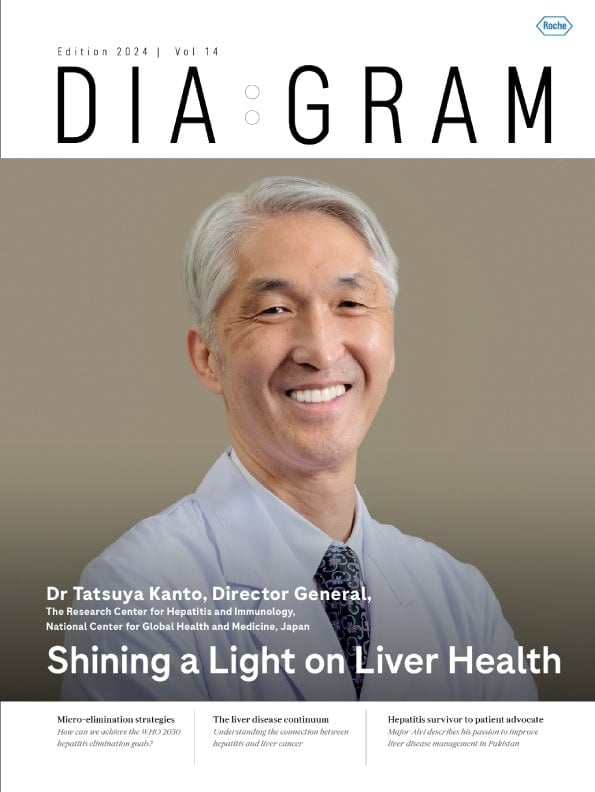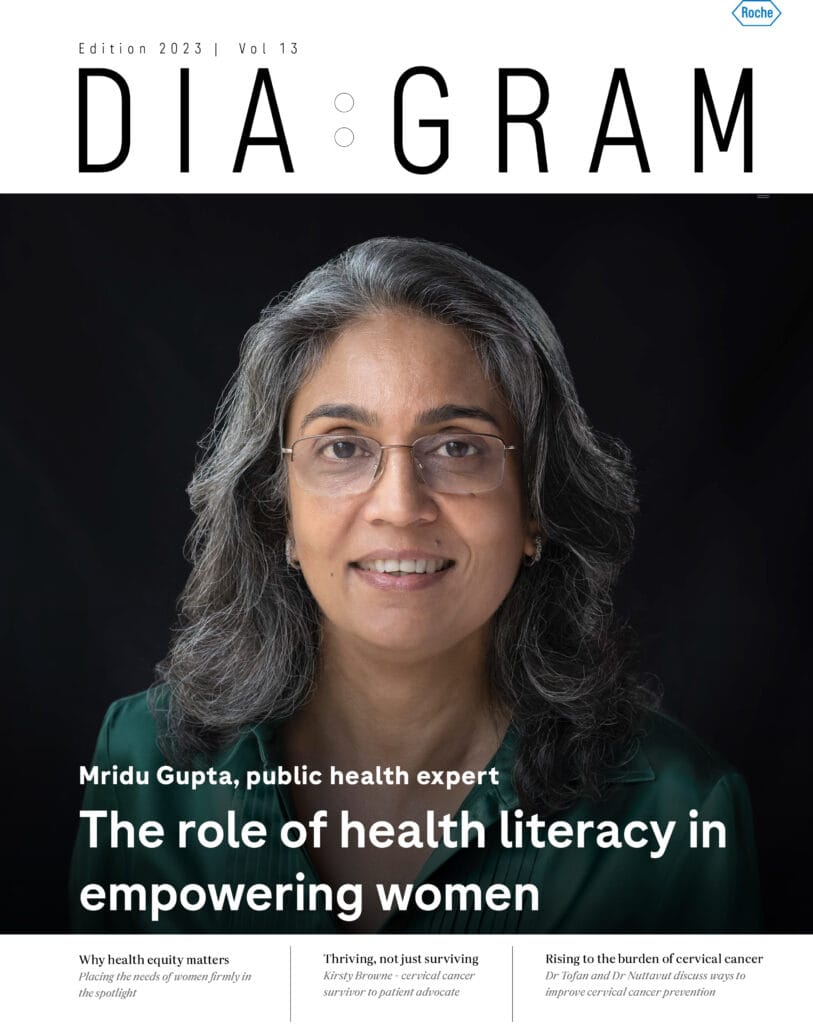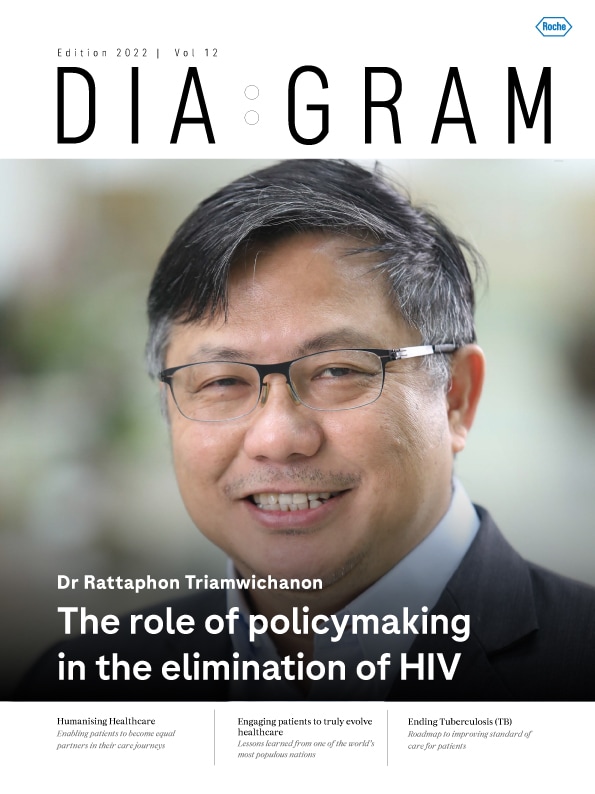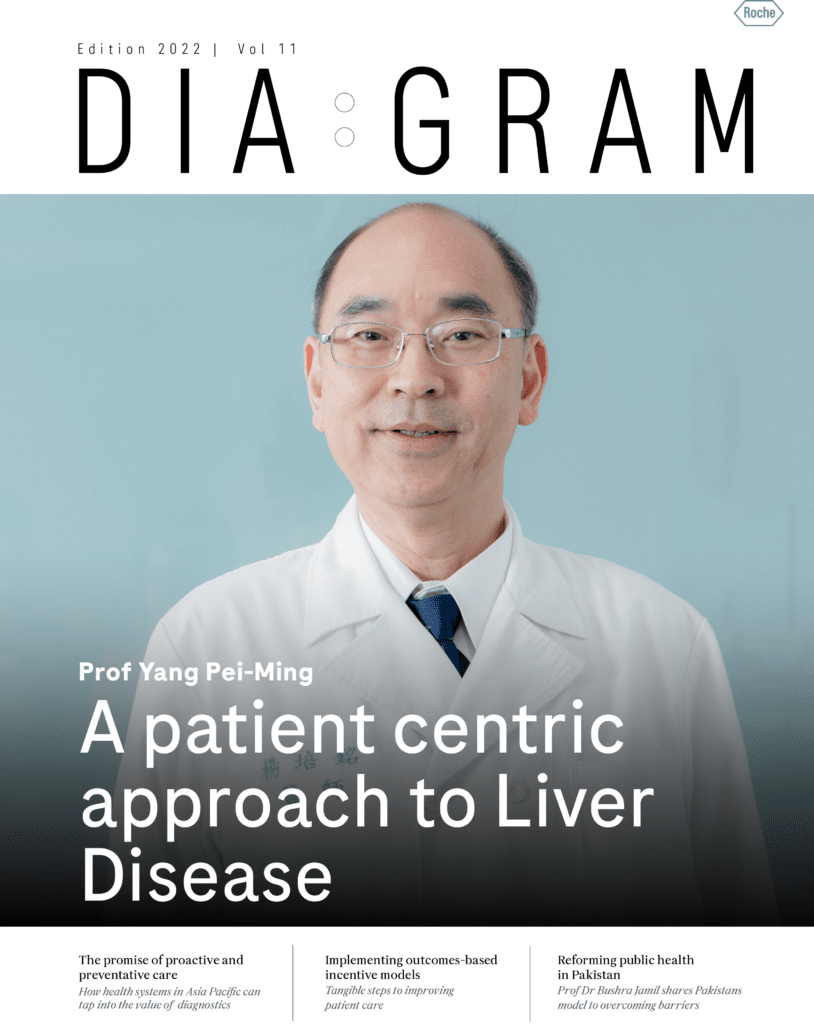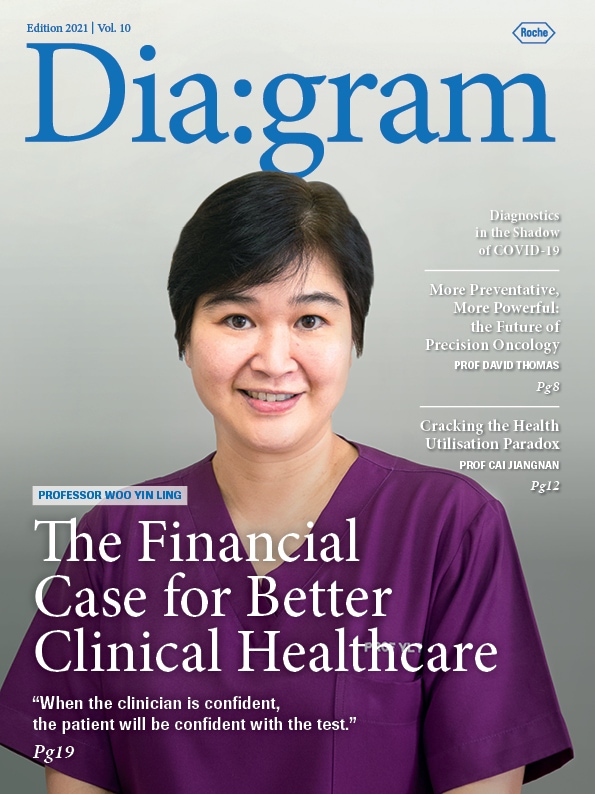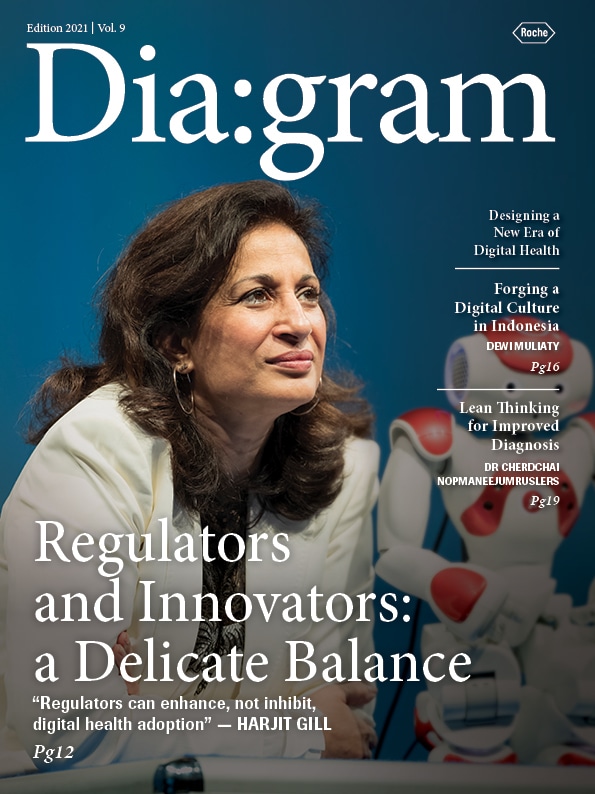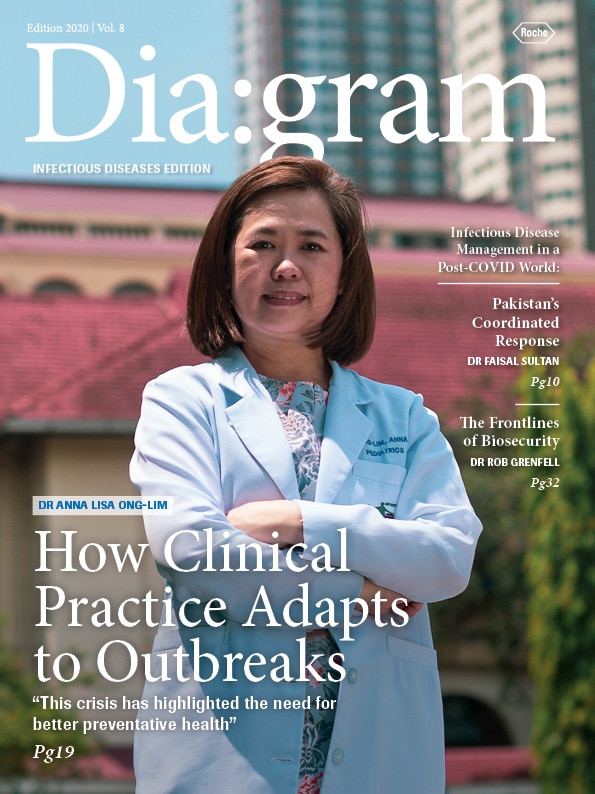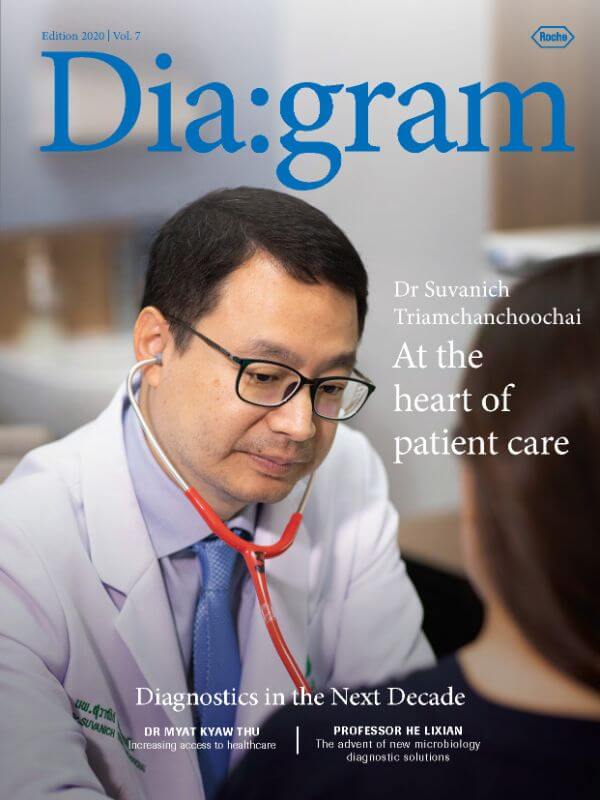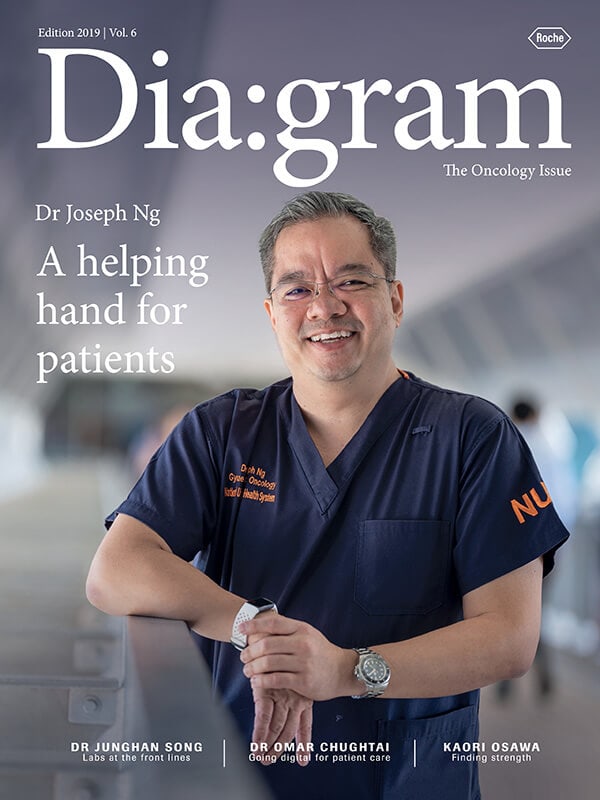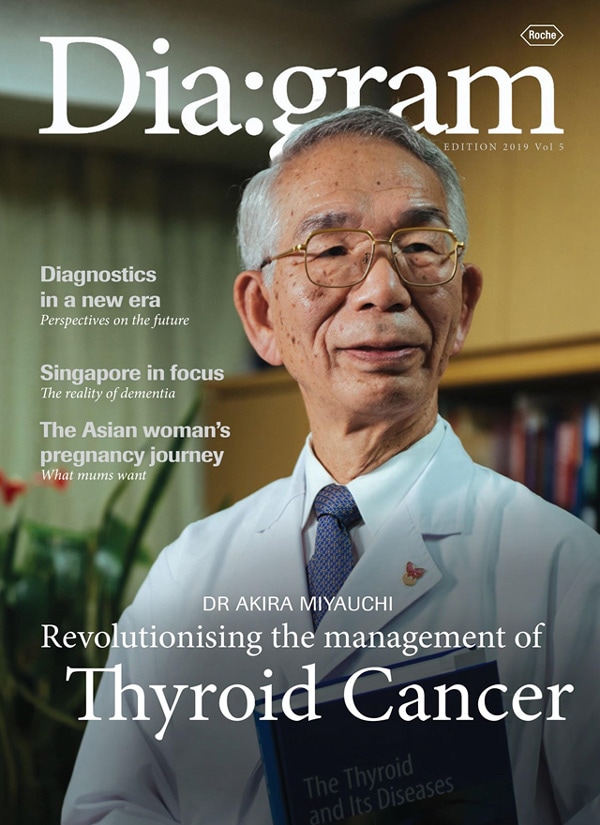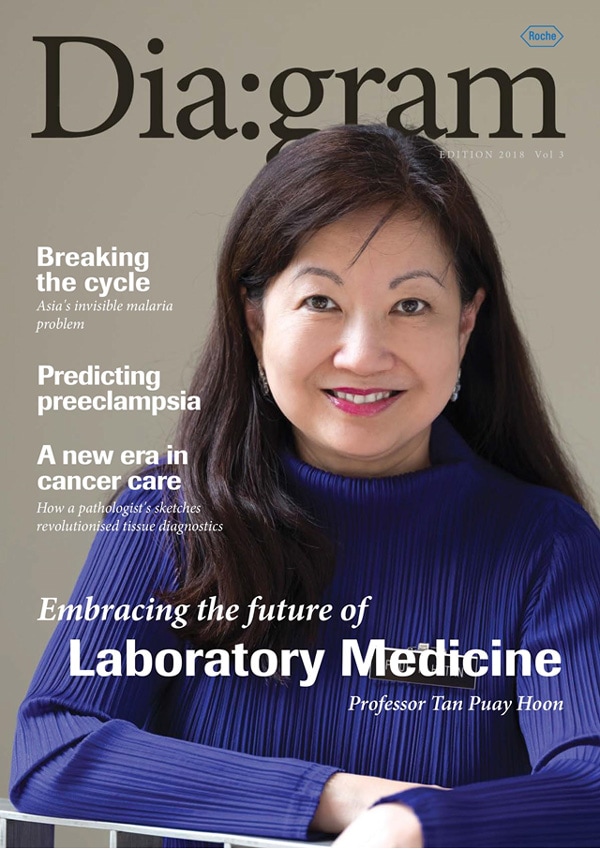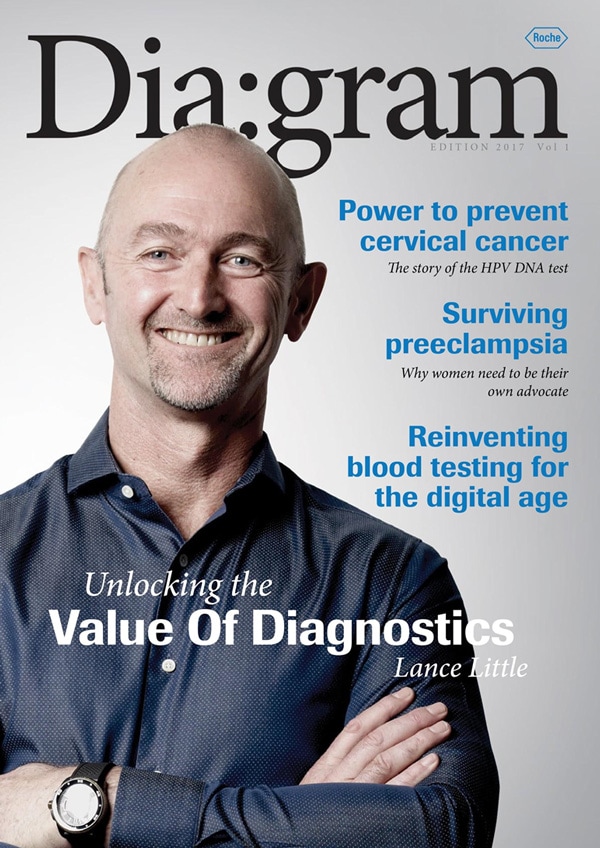Technology is playing a large part in data collection and forecasting in the fight against COVID-19. As a white paper in The Lancet notes, “In the race to contain the spread of a highly transmissible virus, countries that have quickly deployed digital technologies to facilitate planning, surveillance, testing, contact tracing, quarantine, and clinical management have remained front-runners in managing disease burden.”1
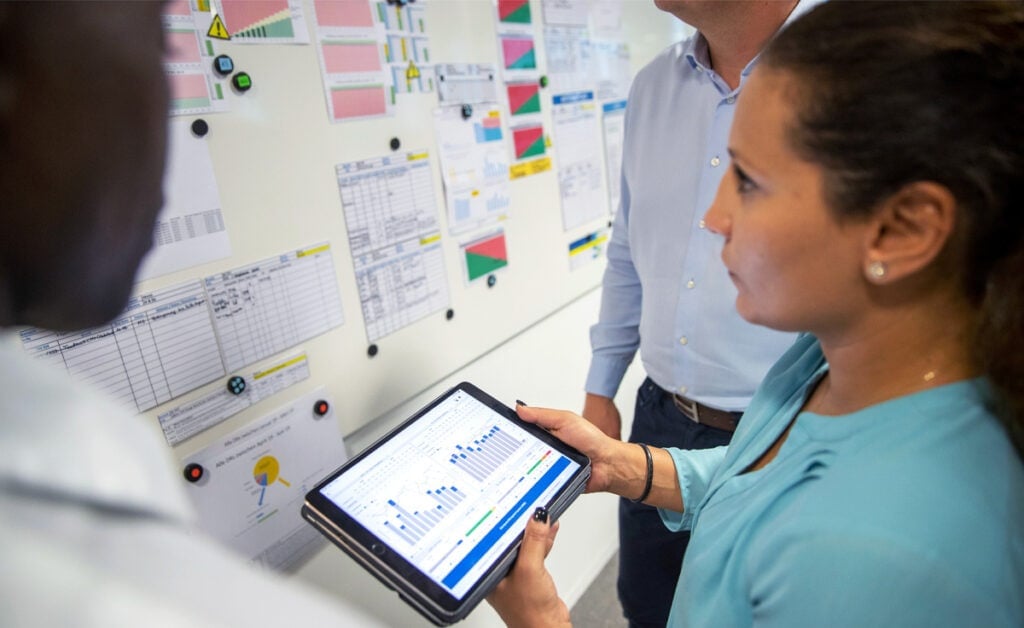
The COVID-19 pandemic has shown how vital digital technology is to empower healthcare planning, surveillance and patient testing.
One such innovation has been devised by medical technology startup Respiree, with the goal of freeing up clinicians, whether they are GPs or specialists, to focus on their core duty to treat the sick.
Its co-founder Dr Gurpreet Singh, who has a background in electrical engineering, says he has found himself working with the health service sector in Singapore thanks to Respiree’s development of a sensor that measures respiratory rates. With studies finding that respiratory issues can significantly worsen the health of COVID-19 patients1, more efficient respiratory monitoring is key to ensuring effective care. It can also help when urgent re-allocation of medical supplies is needed. At the beginning of the outbreak in particular, many hospitals struggled to allocate ventilators to those who needed it most2 — a clearer sense of respiratory health in each patient could thus save lives.
Even in higher-resource settings, respiration monitoring is done in old-fashioned ways, and often not done regularly enough. Dr Singh says, “If you go to many hospitals in Singapore now, you find that respiratory rate monitoring is the most manually done method of collecting vital signs compared to other methods. We found that quite interesting because a lot of clinical studies and reports have actually shown that that particular biomarker is supposed to be the most predictive vital sign — but it is the least measured vital sign.”
Read more about digital technology in healthcare: Reimagining Health Diagnostics in a New Era.
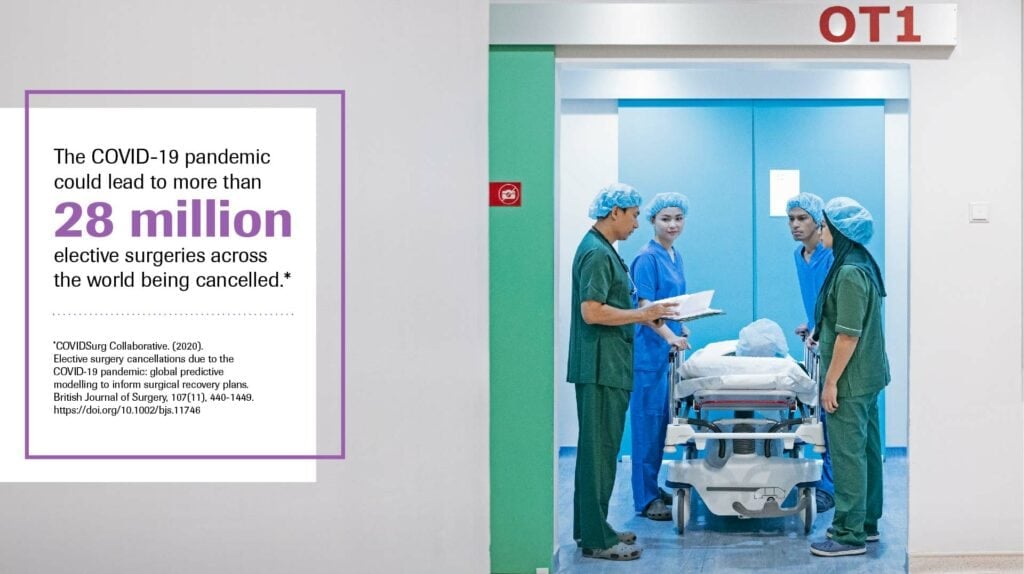
He adds, “If nurses have to do this manually every day, it takes a lot of time so triage can benefit from this.”
Although Respiree needs to be handled by a clinician, it still frees up time for medical staff. It also plugs the gaps, such as between medical shifts or when the patient is asleep — when disturbed sleep patterns can be a sign of disorders — and can be used in the patients’ home for chronic disease management such as chronic obstructive pulmonary disease and congestive heart failure. The technology’s suitability for home use can strongly benefit patients who want to stay away from hospitals or doctors’ surgeries during the pandemic. Many health practices around the world are keen to use the device, says Dr Singh, and in the Asia Pacific region, Indonesia in particular is showing interest.
Bolstered by this demand, Dr Singh’s team are already planning to expand the company’s healthcare technology, which also uses artificial intelligence to provide targeted predictions and diagnosis of cardio-respiratory diseases. “For us, one of the interesting areas is how to leverage patient data,” he says. He explains that there is already a lot of work done using electronic medical records data, which can be accessed easily because it’s at hospital level.
“Home-based propriety novel data, connected to diseases and disease progression: that is something that really excites us,” Dr Singh says. “For us, data will be the future.”
Read more healthcare and diagnostics news from Roche.
References:
1Whitelaw S, Mamas MA, Topol E, Van Spall HGC. (2020). Applications of digital technology in COVID-19 pandemic planning and response. Lancet Digital Health. 2: e435-40. https://doi.org/10.1016/
2Zhao Q, Meng M, Kumar R, et al. (2020). The impact of COPD and smoking history on the severity of COVID-19: A systemic review and meta-analysis. Journal of medical virology, 10.1002/jmv.25889. Advance online publication. https://doi.org/10.1002/jmv.25889
3Jhingan R, Sharma V, Khosla PP, Bhasin D, and Singh H. (2020). Coping with Shortage of Ventilators in COVID-19 Pandemic: Indian Context and Exploring Effective Options in Countries with Limited Healthcare Resources. International Archives of Public Health and Community Medicine. 4(2), 4:043. https://doi.org/10.23937/2643-4512/1710043

